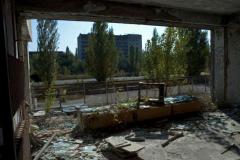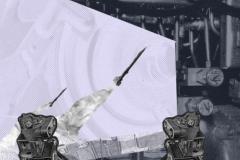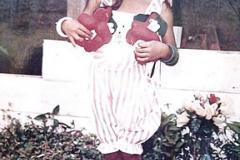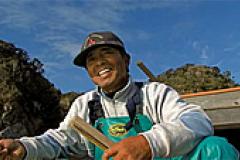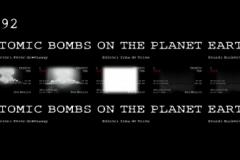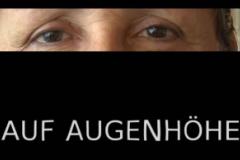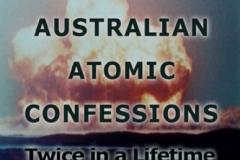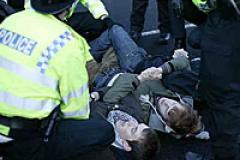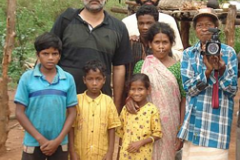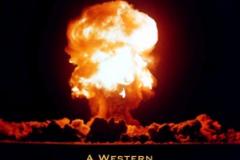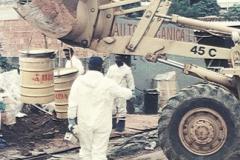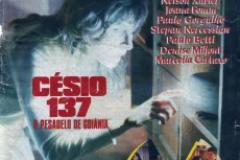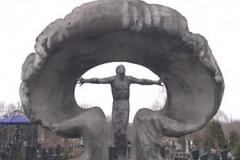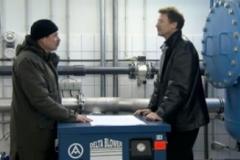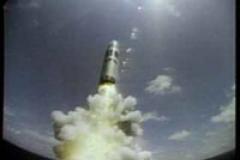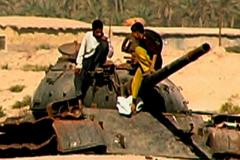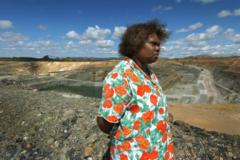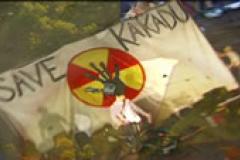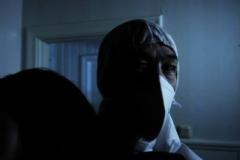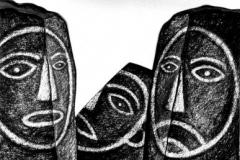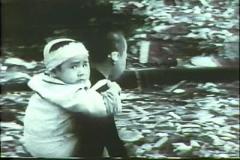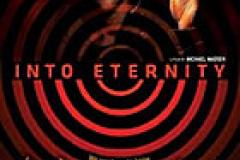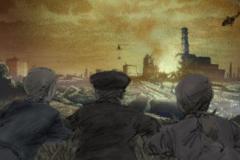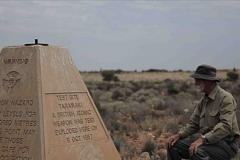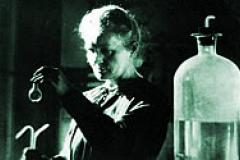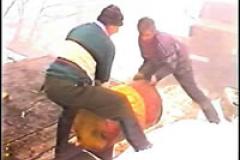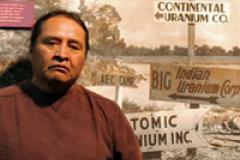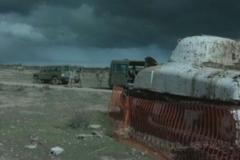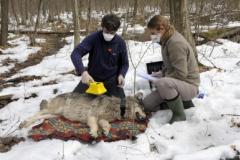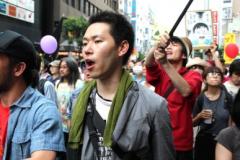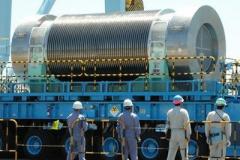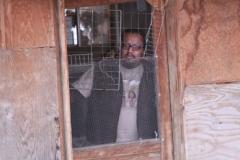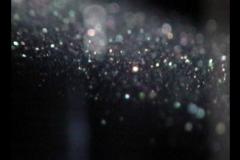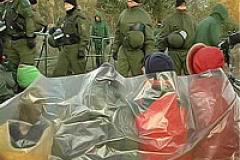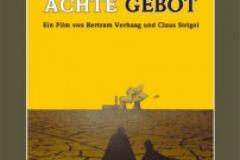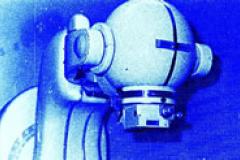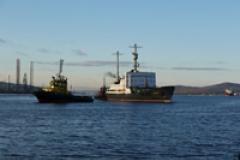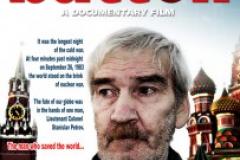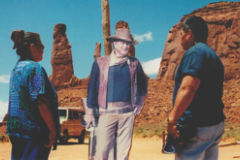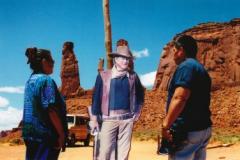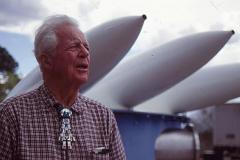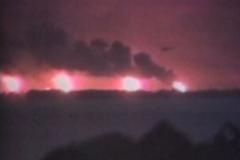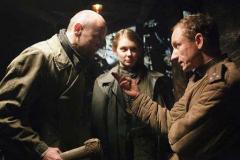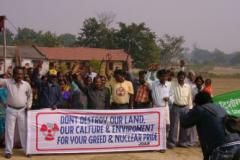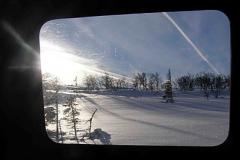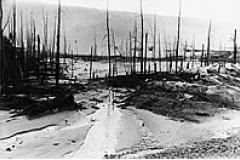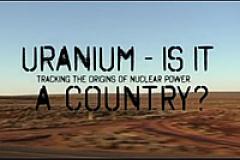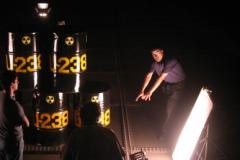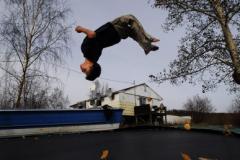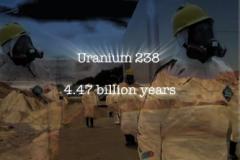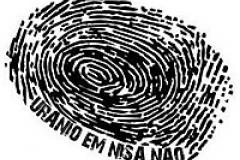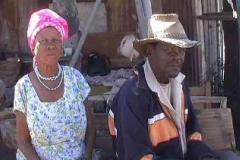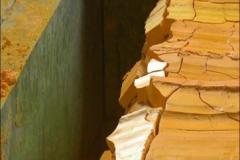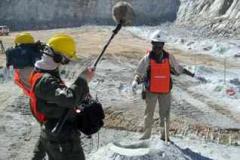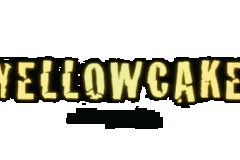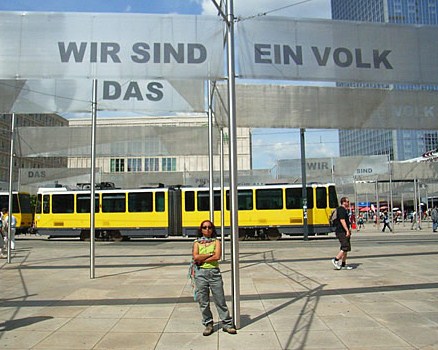 The actual German government is facing out nuclear energy. But winds can change: For that we organize also Uranium Film Festivals in Germany. October 2012 we have been in Berlin. Be our supporter and partner: We appreciate any support for the next travelling Uranium Film Festivals in Germany.
The actual German government is facing out nuclear energy. But winds can change: For that we organize also Uranium Film Festivals in Germany. October 2012 we have been in Berlin. Be our supporter and partner: We appreciate any support for the next travelling Uranium Film Festivals in Germany.
ICBUW Germany about the Uranium Film Festival in Berlin 2012
Originally initiated in Rio de Janeiro in 2011 the Uranium Film Festival traveled to Germany to build on its success in Brazil. From the 4th to the 12th of October the two cinemas Eiszeit and Moviemento situated in Berlin-Kreuzberg were showcasing the comprehensive program of the film festival. An extensive number of documentaries, animation-, short-films and motion pictures were covering the whole nuclear cycle, from uranium mining to civilian and military use.
Many of the producers and directors from all over the world were present to engage in discussions with the audience. In both cinema premises a short exhibition on the DU issue was dispelled, together with other relevant material. On the 7th of October a special emphasis was put on the use of depleted uranium in weapon systems. Representatives from ICBUW Germany and other organizations as well as filmmakers and journalists were raising awareness and discussing the latest developments on the topic. The diverse audience let to a wide-ranging debate which focused, among other things, on prospects of making civil society engagement to become effective in banning DU weapons.
It became apparent that many filmmakers and journalist have found it difficult to obtain additional jobs after having covered the problem of depleted uranium weapons. Others criticized the lack of interest and support from the general media in reporting on the matter. Overall the festival was a great success and the festival team hopes to return to Berlin next year with a new program, and activities to be coordinated with German anti-DU and anti-nuclear activists. Meanwhile, the Uranium Film Festival is poised to continue traveling to other countries before returning to Rio de Janeiro in May 2013. / ICBUW Germany, Coop Anti-Kriegs Cafe
(Un dimanche à Pripiat)
France, 2006, 26 min, English
Written and directed by Blandine Huk & Frédéric Cousseau.
Somewhere in Europe there is a forbidden zone. Lying in the heart of this zone is Pripyat, at one time a model city inhabited by some 50,000 people. On April 26, 1986, an invisible enemy forced the residents of Pripyat to evacuate the area in order to escape. Pripyat was home to the Chernobyl Nuclear Power Plant workers. It was abandoned in 1986 following the Chernobyl disaster.
A Sunday in Pripyat is a testimony to environmental and human destruction caused by the Chernobyl nuclear power station disaster.
USA, 2011, 6 min, English
Animation/Experimental
Producer: Nathan Meltz
Latin American Premiere
The film remakes a section of the 1983 post-nuclear made-for- TV movie 'The Day After', retelling the story of atomic devastation in a Dada collage-meets-stop-animation style. The film showed atomic bombs reducing humans and animals to skeletons, and a city was blown to rubble.
Brazil, 2002, 4 min, Portuguese
Fiction
One of the first victims of the radioactive accident of Goiânia with Cesium-137 September 1987 was a 6 year old child. Leide das Neves had no time to play.
Japan, 2010, 116 min. English
For 28 years, the people of Iwaishima Island, living in the middle of the bountiful Inland Sea, have been opposing a plan to build a nuclear power plant. The island has a 1000 - year history during which people have preserved their traditional festival. Takashi, the youngest on the island , is struggling to earn his living. He dreams of a life based on sustainable energy. Meanwhile, communities in Sweden are making an effort to implement such lives. The people living in the Arctic circle have taken action to overcome damage from the global economy. On Iwaishima, Mr. Ujimoto has begun sustainable agriculture by reclaiming aban-doned farmlands. But a power company tries to fill in a bay to create man-made land. The people of the island set sail together to stop the construction of the nuclear power plant. A fight breaks out on the sea.
“Ashes to Honey” reached the Uranium Film Festival after the selection process, but because of its importance and because of Fukushima we selected it for the noncompetitive category.
UK/The Netherlands | 2011 | 13 min | Art & Experimental documentary
Director: Peter Greenaway, Video Design Irma de Vries
Producer: Change Performing Arts www.changeperformingarts.com | Language: Multilingual
Synopsis: Very surprisingly from 1945 to 1989 there have been 2201 atomic bombs dropped on the planet Earth - an astonishing number of atomic bombs implying huge destruction and fall-out. The film shows evidence of every bomb explosion documented with the nation responsible, the date and location, the force and the height about earth or sea level in a relentless build up of accumulating destruction that is both inspiring and dreadful in the true biblical sense of the phrase - full of dread.
Video: https://www.youtube.com/watch?v=Mc3EKAszRAw
Awards: International Uranium Film Festival Hors Concours Award, Rio de Janeiro 2012
Germany, 2010, 11 min, German/Portuguese subtitle
Production: Strahlendes Klima
Latin American Premiere
It is a short film about uranium mining and environmental racism in Niger, Namibia and the United States of America.
www.strahlendesklima.de/augenhoehe/
Australia, 2005, 49 min, English and Aboriginal Australian
Documentary
Latin American Premiere
Sacrificial lambs to the slaughter. Eyewitnesses tell the true story of what happend during the 12 British atomic bomb tests in Australia. The film is a chilling expose of nuclear testing and the demaging legacy that continues these day.
United Kingdom, 2010, 71 min, English
Directors and Producers: Meera Patel and Wolfgang Matt
Production: Maddmovies
Documentary
A story about the biggest weapons of mass destruction ever created, the people who use them and, more importantly, the people who fight them. 'Beating the Bomb' charts the history of the British peace movement against the backdrop of the atomic age. The film also frames the nuclear weapons issue within the wider context of global justice.Beating the Bomb, United Kingdom, 2010, 71 min.
www.beatingthebomb.com, contact: maddmovies@gmail.com
"Beating the Bomb" was selected by the Uranium Film Festival Jury as one of the eight best documentaries of the festival.
Best documentary award, Red Rock Film Festival, Utah, USA
Germany, 2011, 5 min
Animation, no dialog
Production: Franka Sachse, Uli Seis, Bauhaus-University Weimar
Latin America Premiere
A firefly falls in love with the most shiny thing he knows, the sun.
Fireflies are so romantic, aren't they? And if it is the last thing they do...
Spain, 2010, 12 min
Animation
Producer: Abrakam Estudio
A terrible industrial accident changes DINKI's life forever. Now DINKI's fate may ride on the wings of her eccentric friend BIRDBOY, a misfit who hides in the Dead Forest, lost in his fantasies...
Australia, 2005, 62 min, English
Production: Frontline Film Foundation
Documentary
Latin American Premiere
Blowin' in the Wind examines the secret treaty that allows the US military to train and test its weaponry on Australian soil. It looks at the impact of recycled uranium weapons and the far-reaching physical and moral effects on every Australian. The film's release has been timely as the government currently moves to approve more uranium mines while arguing the contrary - that by going nuclear we are being both 'safe' and 'green'. The film reveals that Iraqi babies are now being born with major birth defects. Bradbury wonders whether Australians living downwind from the military testing ranges will be next. He argues that we were lied to by the British over the Woomera and Maralinga atomic tests. Can we trust another equally powerful partner in our 'war on terror'?
With a cash budget of just $12,000 the film raises pertinent questions which cannot be ignored by the Australian public. The film shocked, angered and surprised large audiences when shown at the Sydney and Brisbane Film Festivals.
www.frontlinefilms.com.au/videos/blowin.htm
(Ragi Kana Ko Bonga Buru)
India, 1999, 52 min, English
Documentary
Not part of the Competition
"Buddha Weeps in Jadugoda" is a documentary film on uranium mining and its deadly impacts on the tribal people living near the Jadugoda mine, mill and tailings dam, in the East Singhbhum district of Jharkhand (India). Unsafe mining, milling and tailings management by UCIL in this area for almost 30 years has resulted in excessive radiation, contamination of water, land and air, destruction of the local ecology, and lead for to genetic mutation, and slow death for the people of the region. The film attempts to depict the gross misuse of power by the authorities in displacing the original inhabitants of the region, the utter lack of concern for internationally accepted norms and safety precautions in the handling of uranium and its by-products, and their callousness of its disastrous impact on the people and the region.
Director Shri Prakash present, Berlin 2012
Q&A with Shriprakash + RAOUF DABBAS, Amman 2014
USA, 2006, 6 min, English
Animation
Latin America Premiere
An experimental "Western" environmental expose on the burial of 17,500,000 cubic feet of radioactive and other toxic waste disposed of during the Cold War by Los Alamos National Labs, in unlined pits in the Earth. This radioactive waste has contaminated groundwater, and deep aquifer water, affecting indigenous communities and surrounding land.
(Césio 137 – O Brilho da Morte)
Brazil, 2003, 24 min
Director: Luiz Eduardo Jorge, Producer: Laura Pires
AUDIENCE AWARD BEST SHORT FILM 2011
That Brazilian short film shows the events of a real live tragedy about the release of radioactive Caesium-137 into a populated area in 1987 in the city of Goiânia, Brazil. It was the worst radioactive accident in Latin America, which cost the lives of many people and the health of hundreds or possibly thousands of survivors.
15 years of pain, fear, panic and doubt. Discrimination, segregation and death of victims of one of the world's largest radiological accident, with irreversible damage to people and environment. The screenplay is based on testimonies of the victims.
Brazil, 1989, 95 min, Portuguese, English subtitles
Producer: Laura Pires
Doc Fiction
AUDIENCE AWARD BEST FEATURE FILM 2011
In the ruins of a demolished hospital for cancer treatment in the centre of the Brazilian city Goiânia, two young men found an old "forgotten" Teletherapy Unit, which contained a highly radioactive "Caesium 137 bomb". They sold it to a local scrap metal dealer, who opened that Pandora's box. People were fascinated by the dazzling blue light of the caesium crystals. But they did not know, that it was the shine of the death. Hundreds if not thousands of the citizens and visitors of Goiânia became victims of Caesium 137. The script of the movie is based on statements by the victims and medical personal attending the victims, taken by Roberto Pires at the time of the accident.
(Verstrahlt und vergessen, Tschernobyl und die Folgen)
Germany, 2006, 59 min, German/ Russian, English Subtitle
Production: ARTE – WDR
Brazilian Premiere
April 26th 1986. The day a nightmare scenario became horrific reality: the day reactor block 4 of the Chernobyl atomic power station exploded. While researching and filming this project filmmaker Christoph Boekel met numerous victims of the atomic catastrophe. His own wife was one them and she, too, died of cancer. A moving film told from the personal perspective of the director, it is a requiem for the often forgotten victims of the disaster and a caveat against putting blind trust in technological advancement.
(Gefährliches Trinkwasser)
Germany, 2010, 44 min, German
Director: Dethlev Cordts, Production: Dethlev Cordts for NDR German TV
Latin American Premiere
From 1951 to 2005 at least 13,000 tonnes of uranium have been proposed on German fields. Phosphate fertilizers were dirtied with an average of half a pound of uranium per tonne. The confederation of industries agrarian and the farm association do not take a serious view on that. The natural uranium deposits in our grounds are much higher, than the additional load by the fertilization. Besides, they hide that the so-called "natural uranium" is already integrated since millenniums firmly in the crystalline structures of the rock, the uranium from the fertilizer, however, is very slightly water-disolvable and movable and can reach very fast in the drinking water leaders. In an exciting trace search author Dethlev Cordts is looking for the springs of the uranium coming along in the drinking water.
USA, 1991, 29 min
Documentary
The documentary uncovers the disastrous health and environmental side effects caused by the production of nuclear materials by the General Electric Corporation. The film juxtaposes GE's rosy "We Bring Good Things to Life" commercials with the true stories of people whose lives were devastated by the company's involvement in testing and making nuclear weapons. Driven by intensely personal testimony and painstaking research, "Deadly Deception" exposes what GE never wanted its customers to know: a shocking pattern of negligence and misinformation spanning several decades. Nine months after this film won the Oscar®, GE pulled out of its work in the nuclear weapons industry, and Corporate Accountability International organizers of the GE boycott, declared victory in their grassroots campaign. The 1991 Academy Award®- winner for Best Short Documentary, Deadly Deception unco-vers the disastrous health and environmental side effects caused by the production of nuclear materials by the General Electric Corporation. The film juxtaposes GE's rosy "We Bring Good Things to Life" commercials with the true stories of people whose lives were devastated by the company's involvement in testing and making nuclear weapons.
Contact: www.groundspark.org
Germany, 2006/2007, 93 min, German
Director: Frieder F. Wagner, Email: ochowa-film@t-online.de
The film accampanies Prof. Guenther, specialist for tropic diseases and epidemiologist, and his expert colleagues as they research on the effects of depleted uranium ammunition used in Iraq, Kosovo, Bosnia, although long since banned ba Hague and Geneve Conventions. The ammunition penetrates steel like a knife slices butter and then explodes into radioactive nanoparticles that disperse: Winds can carry them clear across our planet. Unnoticed by all in contact with them, they flow through bodies like water through a sponge, leaving behind a path of destruction through the cells they crossed. In their search for contaminated battle fields. Prof. Guenther and fellow scientists discover, for example in Iraq, areas, in which radioactive contamination is 30.000 times higher than Earth's natural radiation level.
Frieder Wagner is present during the screening.
Australia, 1980-2011, 51 min
English/Gunwinku, English Subtitles
Uranium mining was imposed on the Traditional Owners of Kakadu, Australia in the late 1970s and the controversial Ranger mine commenced production in 1981. Three decades later Kakadu uranium is still shipped out of Darwin to fuel nuclear reactors in Japan, Europe and elsewhere.
The film includes rare footage of Mirarr Senior Traditional Owner Toby Gangale stating clear opposition to mining on his country and documents his prescient concerns about uranium. It shows how the Federal Government overrode the human rights of Kakadu's Traditional Owners in order to impose a toxic industry in a World Heritage Area. The film provides a unique insight into a story that continues to generate heartache and headlines today.
Australia 2001/2002, 62 min
Writer/director/camera: Pip Starr
Rockhopper Productions, www.rhproductions.com.au
The documentary took 4 years and 4 weeks to complete. It tells the story of one of Australia's largest ever land rights and environmental campaigns, the fight to stop the building of a second uranium mine within Kakadu National Park. Made with the cooperation of the Mirrar aboriginal clan, the owners of the land on which Jabiluka is proposed to be built. Whatthe film makes clear is that the Land Rights Act has is not enabling aboriginal people to control activities on their land, and that their political and cultural rights continue to be eroded. Fight for Country is a powerful and inspiring story of an aboriginal nation standing up for their country, and of the non-indigenous Australians who stood with them.
Sweden, 2011, 14 min 30, Swedish/English Subtitle
Latin American and Indian Premiere
Yellow Oscar Best Short Film 2012
During a coffee break two men, wearing protective suits, are having a conversation about Chernobyl, Harrisburg, Forsmark and nuclear meltdowns.
Back at work their lack of empathy makes them true professionals.
And someone else becomes a victim. Coffee Break is a comedy-thriller.
USA, 2012, 18 min, Japanese/English, English subtitles
Producer: Yoko Kumano
Documentary
World Premiere
The film addresses the isue of radiation in food after the March 11, 2011, Fukushima desaster. The film features interviews with food producers, restaurant owners and new parents about the food consumption has changed after the nuclear accident and the contamination of the food chain with radioactive elements.
USA | 1997 | 9 min | Animation
Director: Karen AQUA (1954 - May 30th, 2011) | Music by Ken Field
Language: No Dialogue
Synopsis: In south-central New Mexico, an ancient Native American rock art site lies 35 miles from the detonation site of the world’s first atomic bomb. The juxtaposition of these sites points to the striking contrast between the two worlds which created them: one which reveres and lives in harmony with the natural world, and one which, in striving to control the forces of nature, has created a means for its destruction. Film director's website: http://karenaqua.com
Awards:
Humboldt International Film Festival, CA, 1998: 1st Prize, Animation
Marin County National Festival of Short Films, CA, 1998: 1st Prize, Animation
Green Extreme Film Festival, Canada, 1999: Best Environmental Film
Prix Leonardo, Italy, 1999: Gold Certificate
International Uranium Film Festival SPECIAL ACHIEVEMENT AWARD 2012
(Hibakusha - Unser Leben zu Leben)
USA, 2010, 78 min, English with German subtitles.
Memory Productions
Documentary
The stories of Japanese, Korean, and American Hibakusha: Survivers of the atomicbombs. Their stories are linked to the relationship between Eiji Nakanishi (one of youngest survivors of Hiroshima) and his little friend, Yoko, an eight year old girl he teaches to play the guitar. Little by little she learns about Eiji's hiba-kusha experience. She becomes intrigued by colorful pictures and drawings made by the survivors. Then she discovers Sadako and the story of the Thousand Cranes. "Will Eiji take me to thePeace Festival in Hiroshima?" The bombing of Nagasaki is shown through the sharp focus of a Shinto wedding ceremony. Back in America, Davey throws down his tin pot and wooden spoon of his Hiroshima-Nagasaki celebrations.
Japan, 1990, 30 min, Portuguese
A film of Hiroshima Peace Memorial Museum
A documentary film featuring footage captured immediately after the blast, it calls for the abolition of nuclear weapons and world peace from the viewpoint of a mother in Hiroshima.
Denmark, 2010, 75 min
Director: Michael Madsen
Producer: Lise Lense-Möller / Magic Hour Films
This film explores the question of preparing the site so that it is not disturbed for 100,000 years, even though no structure in human history has stayed standing for such a long period of time.
"Every day, the world over, large amounts of high-level radioactive waste created by nuclear power plants is placed in interim storage, which is vulnerable to natural disasters, man-made disasters, and societal changes. In Finland, the world's first permanent repository is being hewn out of solid rock – a huge system of underground tunnels – that must last the entire period the waste remains hazardous: 100,000 years."
Once the repository waste has been deposited and is full, the facility is to be sealed off and never opened again. Or so we hope, but can we ensure that? And how is it possible to warn our descendants of the deadly waste we left behind? How do we prevent them from thinking they have found the Giza pyramids of our time, mystical burial grounds, hidden treasures? Which languages and signs will they understand? And if they understand, will they respect our instructions?
Experts above ground strive to find solutions to this crucially important radioactive waste issue to secure mankind and all species on planet Earth now and in the near and very distant future."
Into Eternity won the Jury Award as the best feature film of the 1st International Uranium Film Festival of Rio de Janeiro 2011.
(La guerre radioactive secrète)
France, 2000, 64 min
Director: Martin Meissonnier
Contact: www.campagnepremiere.fr/uranium.html
After 1991 in Irak, many children are born with malformation, in the USA, hundred of thousands of soldiers have gulf War disease and their children have malformation too. This film is an inquest on Depleted Uranium featuring 2 whistle lowers inside the Pentagon and US declassfied documents, and interviews with the deputy secretary of state in charge of the Gulf war disease.
Germany / Ukraine, 2011, 19 min, Russian, English Subtitles
Animated documentary
Producer: Tetyana Chernyavska
Yellow Oscar Best Animation Film 2012
A Soviet family searching for a modest paradise is swept into an immense disaster. This magically animated film combines drawing, photography and documentary video to capture the surreal emotions of the too-real tragedy: Chernobyl 1986.
Australia, 2012, 13 min, English
Producer: Jessie Boylan
Editor: Anthony Kelly
Music: Genevieve Fry
Maralinga Pieces: Between 1952 and 1963 the British Government performed highly secretive nuclear weapons tests at Maralinga and Emu Field in South Australia and on the Monte Bello Islands off the coast of Western Australia. A total of twelve major nuclear tests were performed, and up to 700 minor 'dirty' trials were also conducted. The area was massively contaminated with radioactive materials and cleanups were attempted in 1967 and 2000. However, examinations after these cleanups found that many of these sites still remain radioactive. Shot on location at Maralinga in 2011, this short film takes the viewer through a cinemagraphic landscape of the places these bombs were exploded, as well as extracts snippets of memories of Aboriginal elders and Australian nuclear veterans, whose lives have been deeply impacted by these tests.
Film/Trailer link: http://jessieboylan.com/maralinga-pieces/
USA, 2010, 73 min, English
Documentary
Latin American Premiere
Yellow Oscar Best Feature Film 2012
For much of the twentieth century the United States Department of Defense was a major producer of radioactive waste. The Pentagon not only produced its own nuclear waste. For years, the Pentagon depended on an unknown number of private defense contractors to supply countless radioactive parts and equipment. In the mid-twentieth century, the U.S. government actually gave some of these defense contractors permission to dump radioactive waste on their private properties.
The Pentagon seldom, if ever, disclosed the whereabouts of these dangerous nuclear dumps. The problem becomes one for the ages: many of these radioactive isotopes remain dangerous and "hot" for thousands of years, even as the radiation is invisible to unsuspecting victims.
This carelessness caught up with college students in Lock Haven, Pennsylvania. One day the students woke up to find environmental officials dressed in protective "moonsuits" searching their apartment building for tell-tale signs of radioactive waste.
Georgia / Netherlands, 2003, 16 min
Directors: Janita Top & Marij Kloosterhof
Contact: Stichting Falkor, info@falkor.org
In June 2003 police in Tiblisi, Georgia (South Caucasus) seized a taxi which was transporting radioactive sources Caesium and Strontium. The owner of the vehicle said, he knew nothing about the contents of the freight. Even a tiny fraction of strontium, if inhaled or ingested, can cause cancer. This is an example of the socalled orphaned sources: radioactive materials that are lying around in a former Soviet republic. They have been found in forests and rivers, and in the city. Some of these materials were left behind by the Soviet army, after the collapse of the Soviet Union, some found their way to Georgia via illegal trading. In the Caucasus, places where nuclear waste is stored have not always been well regulated. Large amounts of waste have been stolen by soldiers and citizens, hoping to make money out of it. In 1997 eleven Georgian soldiers were exposed to radiation and became ill. In winter 2002, three residents of Tsalenjikha, western Georgia, suffered severe injuries due to exposure to a strontium source. The issue radioactive pollution is politically sensitive. Governments seem to be closing up about the subject and information is difficult to obtain. Moreover, since 11th of September the subject radioactive materials is also being connected to 'the war on terrorism' (Georgia is neighbor of Chechnya) and illegal trading of sources.
USA, 2007, 37 min
Director: Jenny Pond, produced by Norman Patrick Brown & Jenny Pond.
Advisor: Manuel Pino, Recipient of the Nuclear Free
The film tells the story of a corrupt government, unconscionable greed and a policy of destruction aimed at the Aboriginal Homelands of Indigenous People from the 1940's until today. It is a documentary about uranium mining and the devastating effect it has on the people, livestock, water and agriculture in the 4 Corners area of the US and the Grand Canyon. The path of POISON WIND has taken us to political and environmental activists within the Navajo Nation (Diné) and Pueblo People (Acoma and Laguna) of New Mexico, Western Shoshone, Hualapai and Havasupai where today many people suffer relentlessly from the effects of living near radiation contaminated lands. POISON WIND highlights the greed of mining companies that set out to destroy the balance of life created by the people of these lands...sacred to so many and offering only a death sentence in the end. This film is a "Visual Oral History" which comes from the people themselves and only serves to focus on their stories, as they speak from their hearts about how uranium mining left them victims of where they live.
Future Award 2008
Info: Poisonwindmovie.wordpress.com
Italy, 2011, 21 min, English
Producer: Rainews24
Latin America Premiere
For years those people from Sardinia that live near the Quirra shooting range want to know the truth about about several tumours and malformations that have hit the inhabitants and the animals populating that area. Rainews report tells the truth about the first burning truths coming out from Lanusei's prosecutor's office. Those documents clearly talk about the illicit presence and detention of weapons containing depleted uranium.
(Radioaktive Wölfe)
Austria, 2011, 52 min, German/English Subtitle
Production ORF, NDR, WNET & Epo-film
Latin American Premiere
25 years after the biggest nuclear accident in history, wolves reign the radio-actively contaminated no-man's-land, the so-called exclusion zone, of Chernobyl, which stretches from Ukraine into Belarus and Russia. After the explosion of the Chernobyl reactor on April 26, 1986, one city and some 150 villages were evacuated. About 340.000 people were displaced. Uninhibited by the presence of humans, a profusion of wild species has since taken over a territory of about 3.000 square kilometers, creating a new wilderness. At the top of this eco-system is the wolf. Rumors about wolves in the zone have been numerous, but hard facts are still rare. Curious about these rumors, Christoph and Barbara Promberger, carnivore experts from Germany and Austria who have conducted wolf studies around the world visited the zone in 2009 to get a personal impression. They were overwhelmed by the obviously numerous presence of wolves in what has been called the Chernobyl Jungle and is officially the Polessie Radio-Active Reserve.
Germany/Japan, 2011, 72 min, Japanese/English, Spanish Subtitles
Fukushima anti-nuclear demonstrations during May and June 2011. We have filmed at demonstrations and talked with the activists who organized them. We also talked with intellectuals, social and political scientists, about the magnitude of the current protests. During these months, we met a lot of inspiring people and got heaps of interesting footage of this new-forming movement, which seems to combine so many groups and organizations and may cause a major shift within Japanese politics and society. With RADIOACTIVISTS, we captured the spirit of this momentum, showing the challenges and triumphs of a movement of great historical significance.
Japan, 2006, 102 min, English
Latin American Premiere
The film sets in Rokkashomura in the northern part of Japan, where they have built a nuclear reprocessing fuel plant in 2004. This fuel reprocessing plant is for recycling nuclear power by removing plutonium from used nuclear power fuel. This film shows the various lives of the people that live in Rokkashomura and how they are living with the new nuclear reprocessing plant. A lady in the village pursues her activism in order to stop the reprocessing plant. She grows tulips to help raise awareness of what Rokkashomura still has to offer. She even held a farmers market and told each customer "these maybe the last organic plants you can buy without any radiation". This fuel reprocessing plant has divided Rokkashomura into people for and against the building and usage of the plant.
USA, 2011, 30 min, English
Producer: Yvonne Latty
Documentary
Latin American Premiere
"Sacred Poison" is a 30-minute documentary that brings viewers into the pain and devastation that uranium mining brought into the lives of too many Navajo. It is a moving documentary whose power is in the voices and the people that we meet. It is raw and intimate, and I use what I learned from years of reporting, my journalism, to bring their stories to life. The usually reserved Navajo reveal the pain and struggle of living life where the amount of clean water you have to drink is very limited, where one family lost seven children to uranium contamination, where various forms of cancer seem to live inside so many neighbors.
TRAILER
http://sacredpoison.com
Brazil, 2011, 2 min
Animation
Production: Leite Filmes
An intimate immensity.
(Der zehnte Castor-Transport nach Gorleben)
Germany, 2007, 43 min
Protests against Nuclear Waste Transports in Germany: Nowhere on earth has the nuclear industry found a safe way to keep waste that will remain dangerous for at least a million years. In Germany politicians decided 30 years ago that a salt deposit near the village of Gorleben in the north of the country should be the permanent repository, and a prefabricated storage hall next door to it the "interim storage". Scientists almost from the outset ruled the salt dome unsafe.
The 800 people living near Gorleben and several thousand others living in a cluster of villages and small towns in the picturesque farming and forestry area have fought the nuclear plans and the transportation of waste to the storage from the beginning. The recycled waste from German power stations comes from a plutonium plant in northern France in so-called Castor caskets.
We have filmed the protests against the tenth such transport to Gorleben in November 2006. You will see how after 30 years the people living near Gorleben and the thousands who join them from all over Germany once a year when the Castor train comes are not tired of revolting against this nuclear madness. The film deals with people who sit down on railway tracks and roads, usually in bitter cold, sometimes brutalised by police. It asks them where they find the courage and the motivation to resist again and again, but also about their fear and their powerlessness when facing an army of up to 20,000 police and the annual militarisation of a whole region.
Contact: cinerebelde@cinerebelde.org
Germany, 1986, 95 min, German
Production: Denkmal-Film GmbH
Latin American Premiere
Film documents from the past five decades prove that the use of nuclear energy – whether for peaceful or for military purposes – was made socially acceptable only by repeatedly duping the population. "The Eighth Commandment" (thou shalt not bear false witness on thy neighbour) shows disturbing pictures of nuclear reprocessing plants, giving a sobering insight into the history of atomic power: from Otto Hahn to VEBA chief Benningsen-Voerder. From the first tests in the Nevada desert to the catastrophes of Three Mile Island in the United States to Chernobyl in the former USSR. From political speeches to the civil-war-like scenes at the nuclear power plants of Whyl, Wilster, Brokdorf and Wackersdorf.
(O Pesadelo é Azul)
Brazil, 2008, 24 min, Portuguese/German, English subtitles
In 1987 in Goiânia took place one of the biggest radioactive accidents of the world. Twenty years later the survivers are telling what happened and about their live after the accident. The short film won the Award as best documentary of the 6thABD Cine Goiás Festival (Troféu Pedra Goiâna) 2008.
USA/Singapore, 2010, 2 min, English
Production: Angela How, Morgan Faye
Fiction
Latin American Premiere
A family sits down to a delicous dinner ... or do they? The "Nuclear" Family is a short commercial spec made for the 2010 Swackhamer video contest. The contest topic is:
Shortly after nuclear weapons were first invented, Albert Einstein stated: "The unleashed power of the atom has changed everything save our modes of thinking and we thus drift toward unparalleled catastrophe.
(История ядерного судна)
Russia, 2003-2004, 18 min
Director: group of authors of Bellona-Murmansk, contact: www.bellona.org
This film tells about the most dangerous ship in the Northern Europe called Lepse. The ship, which stores onboard tones of spent nuclear fuel, has become a grave illustration of the problems haunting the Russian nuclear fleet and the international efforts aimed at solving those problems. It will take Russia many more years to manage with nuclear and radiation problems, left due to nuclear heritage of the USSR and the Cold War.
Bellona-Murmansk is an environmental NGO, established in North-West Russia, in Murmansk. The work of the NGO is devoted to solving problems of nuclear and radiation safety, development of renewable sources of energy, climate change, safe oil and gas industry development. Experts of the organization make researches and publish reports, position papers.
Poland/USA, 2011, 52 min, Russian, English subtitles
Production: Miroslaw Grubek, Slawomir Grunberg
Documentary
Yellow Oscar Nomination
The Red Button is a 52-minute documentary film that tells the dramatic story of Stanislav Petrov, the Russian officer who, in 1983, saved the world from atomic war.
During the early '80s, the Russian leader was Jurij Andropov, the most right-wing Soviet leader since Stalin. A known hardliner, Andropov was very wary of US activity. It was an intense period of time in the relationship between the United States and Russia. Tensions were running high between the two superpowers, and the atmosphere was suspicious because of recent incidents. On September 5th, a Korean jet liner with 269 passengers, many of whom were American, had been shot down over Soviet territory because the Russians believed it was a spy mission. The action led Reagan to label Russia an "evil empire." Soon after, the KGB communicated to the western operatives to prepare for possible nuclear war. It is now thought that throughout 1983, the Kremlin assumed that the US and its allies were planning a nuclear strike on the Soviet Union.
So it was in this tense environment that Stanislav Petrov worked deep inside Serpukhov-15, a secret bunker, monitoring early warning satellites. On September 26, 1983, Pietrow was in charge of monitoring American missiles that could potentially be sent to Russia to start a nuclear war. It was not his normal duty; he was to man the post twice a month just to keep his skills from getting rusty. Shortly after midnight, Petrov noticed a missile on his screen. Thinking it was a possible error, he nervously ignored it and waited for any other indications of war. Several minutes later, things became much more serious: four more missiles appeared and a flashing red warning sign began asking him to confirm an incoming attack. By pressing the red button, Petrov would have sent the information up the chain of command to Jurij Votincev, the Commander in Chief of the Russian missile defense, and then to Jurij Andropov who was in charge of the new "nuclear suitcase" and who would have undoubtedly called for a counterattack.
Petrov knew he only had about fifteen minutes to decide what he would do before the missiles would reach the Soviet Union. If he didn't pass the information along, Petrov would be ignoring orders and taking responsibility into his own hands. The protocol, which Petrov had written himself, clearly indicated that the correct course of action would be to inform the Commander in Chief. 120 panicked military officers and engineers sat behind him, looking at the screen and waiting for his decision. "Everyone jumped from their seats looking at me," says Petrov. "What could I do? There was a procedure that I had written myself." The future of the world was in the 44-year-old Russian officer's hands as he wrestled with the decision of whether or not to use Russia's atomic button. In a bold move, however, Petrov decided against it, blaming the signals on faulty equipment instead of imperialistic aggression. At the time, he was not sure he had made the right choice.
Fortunately for all of us, Petrov made the correct decision. His reasoning was that if the Americans were going to start an atomic war, they would have sent hundreds of missiles, not just five.
USA 2000/2008 | 57 min and 15 min Epilogue | Documentary
Director: Jeff Spitz | Produced by Jeff Spitz and Bennie Klain
The film chronicles an extraordinary chain of events, beginning with the appearance of a 1950s film reel, which lead to the return of a long lost brother to his Navajo family. Living for more than six decades in Monument Valley (on the Arizona/Utah border), the Cly family has an extraordinary history in pictures. Since the1930′s, family members have appeared as unidentified subjects in countless photographs and films shot in Monument Valley including various postcards, Hollywood Westerns and a rare home-movie by legendary director John Ford. But it is the sudden appearance of a rarely seen vintage film that affects their lives the most. With the return of “Navajo Boy,” Elsie seizes the opportunity to tell her family’s story for the first time, offering a unique perspective to the history of the American west. Using a variety of still photos and moving images from the 40s and 50s and telling their family story in their own voices, the Clys shed light on the Native side of picture making and uranium mining in Monument Valley.
The Return of Navajo Boy, an official selection of the Sundance Film Festival and PBS, is an internationally acclaimed documentary that reunited a Navajo family and triggered a federal investigation into uranium contamination. It tells the story of Elsie Mae Begay, whose history in pictures reveals an incredible and ongoing struggle for environmental justice. A powerful new epilogue (produced in 2008) shows how the film and Groundswell Educational Films’ outreach campaign create news and rally supporters including Congressman Henry Waxman (D-CA). The Chairman of the Committee on Oversight and Government Reform mandated a clean-up plan by the five agencies that are responsible for uranium contamination.
The documentary, epilogue and now 15 webisodes have leveraged several remarkable impacts: Bernie Cly, one of the Navajo family featured, has been awarded $100,000 in compensation from the US government; the EPA demolished a dangerous house made out of uranium which was featured in the film and completed its $8 million dollar clean up of the abandoned uranium mine located in the backyard of the Navajo family featured in the documentary. The most recent webisode in April 2014, informs viewers that the Navajo tribe won the largest environmental settlement in American history, $1 billion payout from Kerr-McGee, the corporate contaminator exposed by the documentary.
Filmwebsite: www.navajoboy.com
Awards:
2000, Best Documentary, Indian Summer Festival
2000, Programmer's Choice Award, Planet in Focus Film Festival, Canada
2000, Audience Award, Durango International Film Festival
2000, Official Selection, Sundance Film Festival
USA, 2008, 15 min, English
A powerful new epilogue (produced in 2008) shows how the film and Groundswell Educational Films' outreach campaign create news and rally supporters including Congressman Henry Waxman (D-CA). The Chairman of the Committee on Oversight and Government Reform mandated a clean-up plan by the five agencies that are responsible for uranium contamination. Ironically, the US EPA's Comprehensive Five-Year Plan did not include Ms Begay's backyard, until she traveled with this film to Washington, DC and screened it on Capitol Hill in September, 2008. Together we are building a groundswell for environmental justice. Join Groundswell and Navajo Communities in this mission. We will continue filming and raising awareness until all Navajo communities impacted by more than one thousand abandoned uranium mines are cleaned up.
The Epilogue documents how one very determined grandmother, Elsie Mae Begay, travels with the film and continues to work with the filmmakers to launch a federal investigation into uranium contamination of Navajo dwellings and raise awareness about environmental health hazards in the Navajo Nation.
(Los Alamos. Und die Erben der Bombe.)
Germany, 2003, 45 min, English
Production: Denkmal-Film / Hessischer Rundfunk / arte
Latin American Premiere
Hidden in the mountains of Northern New Mexico lies the birthplace of the Atomic Age: Los Alamos, home of the "Manhattan Project". Here Robert J. Oppenheimer and his staff created the first atomic bomb, "Trinity", the scientific prototype to "Little Boy" and "Fat Man," the bombs which hastened the end of World War II by leveling Hiroshima and Nagasaki. Although the laboratory is today also a leading center of genetic research, it remains a place of secrecy, for its main mission is to maintain the existing nuclear arsenal - a task that hides behind the name, "Stockpile Stewardship". The secret meets the sacred upon the mesa of Los Alamos. The lab takes up forty-three square miles - indigenous land of the Tewa people from the pueblos Santa Clara and San Ildefonso. The local Indians are cut off from their traditional shrines of worship: their prayer sites are either fenced off or contaminated. One of the sacred places contains the petroglyph of Avanyu, the mythic serpent that is the guardian of the springs. The Avanyu petroglyph was created long before the first White man set foot on the continent. According to tribal wisdom, those who poison the water must face Avanyu's fiery revenge. The local ground water has been contaminated by decades of the laboratory's uncaring. Warnings from the pueblos' spiritual leaders to laboratory officials fell upon deaf ears. At the laboratory, formulas pull rank on myths.
Following discussion with the director, Munich 2013
(La Terza Bomba Nucleare, Le Accuse del Veterano)
Italy, 2008, 26 min, English
Production: Rainews24 / Radio Televisione Italiana
Latin American Premiere
In the investigative report, an American veteran who participated in "Desert Storm" accuses the Us Administration of having used a small nuclear penetration bomb with an energy of 5 kilotons between the Iraqi town of Basra and the border with Iran. Consulting the "Seismological International Center on line data archive" we found that in the area indicated by the veteran, a seismic event with a power of 5 kilotons was registered the last day of the conflict.
Following discussion with the director, Munich 2013
(Der Uranberg)
Germany, 2010, 89 min, German
Contact: www.saxonia-media.de
The world in 1947: The Cold War has begun. The nuclear arms race between USAmerica and Russia becomes a threat to mankind. The arms race is decided in the Ore Mountains. That is where the Soviets had the Germans mine uranium for the construction of their first atom bomb without any consideration for the actual costs. The repatriated prisoner of war and miner Kurt Meinel (Vinzenz Kiefer) falls in love with Lydia (Nadja Bobyleva), the daughter of the Russian Major Burski (Henry Hübchen) – a dangerous love affair. When they become involved in a mining disaster, their secret love is tried to the breaking point. Lydia's father has to decide between the life of his daughter and carrying out his orders: to mine uranium to preserve peace. Filled with suspense and emotional impact, the film DER URANBERG tells the story of human tragedy as part of an almost unknown chapter of German history which affected world politics.
Belarus, 1990, 26 min, English
Latin American Premiere
"To Whom It May Concern" is a record of broken people's lives in Belarus five years after the Chernobyl power plant explosion. It shows the plight of children and their parents who have been eating low level radiation food. It is an attempt to warn the rest of humanity to the danger of being exposed not only to radiation but to the undisclosed truth. The film was produced 5 years after the Chernobyl nuclear explosion happened. Becoming sick as a result of exposure to the low dose radation for 5 years, and fearing for the health of her then 7 year old son, director/ producer Galina Sanderson decided to attract international attention to the situation in Belarus. The State run media was not allowed (and still is not) to reveal any factual health related information or sócio-psychological effects of the accident, and the director/producer had to quit her position in Belorussian State TV in order to make this film.
India, 2011, 9 min, English
Latin American Premiere
Located on the ancestral lands of the Santhal, Munda and Ho Peoples in Jharkhand, India, Jadugoda is home to almost all of India's Uranium reserves. Moushumi Basu reports on a shocking story that the Uranium Corporation of India Limited (UCIL) and the Government of India doesn't want you to know about. Toxic Neglect was produced for Women Aloud Videoblogging for Empowerment (WAVE). The short documentary about Jadugoda is a candid story narrated by the villagers themselves before the camera.
(Om bergen faller sönder)
Sweden, 2011, 35 min
Director and Producer: Klara Sager
Under the Surface (Om bergen faller sönder) is a documentary about uranium exploration in the north of Sweden. Barbro owns the local grocery shop in the beautiful mountain area of Hotagen. One day terrain vehicles and men with geiger indicators shows up at her shop. Something in the mountains attracts them - there has been a discovery of uranium. Soon several exploration companies arrives to the area. The mountain area is also what is left of the native land for two Sami comunities. They now see a severe treath to their possibilities to survive as a indigenous people. A film about the villagers conflict with the companies and about the hidden sides of nuclear power. It's also a story about the alarming crises of the modern world where people and nature is sacrificed in the name of development.
"Om bergen faller sönder" was selected by the International Uranium Film Festival Jury as one of the eight best documentaries of the festival.
Canada | 1990 | 48 min | Documentary
Director: Magnus Isacsson (1948 - August 2, 2012) | Producer: National Film Board of Canada
Language: English and French
Synopsis: This film exposes the ethical and environmental problems which surround the practice of uranium mining in Canada. The film delivers some hard-hitting and little known facts about the detrimental impact of uranium mining on the environment as well as on the health of those employed in the industry. Toxic, radioactive waste is a severely detrimental by-product of uranium mining, which has been proven to cause profound, long-term environmental damage. The same radioactive waste puts the miners at extreme risk for developing cancer. Finally, because most of the mining to date has been conducted on land historically used by Canada's Native populations, uranium mining violates the traditional economic and spiritual lives of many aboriginal peoples.
Film info: www.socialdoc.net/magnus
Trailer: https://www.nfb.ca/film/uranium
Awards:
Golden Sheaf Award at the Yorkton Film Festival in 1991
Germany/Australia 2008, 53 min, English/Portuguese subtittle
Latin American Premiere
Where does nuclear energy come from? This documentary takes a look at the footprints of nuclear energy. The Olympic Dam uranium mine in Australia is run by the multinational corporation BHP Billiton. Uranium mining is very lucrative and the demand for it is booming. The spokesperson for the Australian Uranium Association talks of a bright future. He claims that Australia has the potential for 15 to 20 new uranium mines. An indigenous resident speaks of the impact the mine has on the environment in which he lives. On the other side of the world, nuclear energy is a subject of debate. A french researcher measures radiation from nuclear sites and uranium transportation. In Germany the state secretary for the ministry of the environment points out that nuclear energy is not suited to stop climate change.
(Uranio 238: La Bomba Sucia del Pentágono)
Costa Rica, 2009, 28 min, English, Spanish subtitles
Producer Isabel Macdonald and San José Quaker Peace Center
Documentary
Uranium 238 depicts the hazards that the use of depleted uranium or DU in conventional weapons poses for the health of soldiers and civilians. Through interviews with soldiers, scientists and activists, the documentary explores the health hazards when this radioactive and toxic material is ingested or inhaled by people in the battle fields and shooting ranges. Based in scientific data this video has been used by the International Coalition to Ban Uranium Weapons (ICBUW) as part of its international campaign to prohibit DU as a military component.
URANIUM 238 - The Pentagon´s Dirty Pool won the Jury Award as the Best Short Film of the First International Uranium Film Festival 2011.
Canada, 2008, 7 min, English
Latin America Premiere
Eight thousand people once lived in and around Uranium City, Sask., in the northwest corner of the province. Founded as a tent outpost in the early 1950s when uranium was discovered nearby, it grew into a thriving community with dozens of mining ventures as well as hotels, apartment blocks, a movie theatre, a hospital and CANDU High School. In the mid-1960s, however, the United States government stopped purchasing Canadian uranium, and the bottom began to fall out of both the market and the city. When the last mine closed in 1982, the exodus began.
USA, 2006, 6 min, English
Animation
World Premiere
The 4.47 Billion year uranium decay cycle is superimposed on footage from the Fukushima Daiichi Nuclear Power Plant triple meltdown, IAEA news footage, and landscape footage in this experimental environmental expose.
(Urânio em Nisa Não)
Brazil / Germany, 2012, 35 min, Portuguese
Production: Marcia Gomes
Latin America Premiere
Portugal has 100 Year long history of Uranium Mining. Also Uranium of Portugal was used to make the first nuclear bombs. Now Portugal´s last big uranium deposite is situated close to Nisa, a beautiful village in the north of Alentejo. In an act of prevention, citizens demonstrated against any uranium mining development. They decided to prefer a sustainable production of local products like chease and olive oil than jobs in the uranium industry.
Brazil, 2010, 27 min, English with German subtitles
This documentary is about uranium mining and uranium prospecting in Namibia and its effects on the local population, environment and the scarce water resources of the Kuiseb Valey. Namibia has 2 uranium mines. Another 10 are planned. Exploration is going on in the territory of the Topnaar-Nama people. Their natural resources, their water and life are jeopardized. Uranium mining is not only producing radioactive dust. It is also wasting huge amounts of water, which is destructive for the homeland of the Topnaar-Nama. Centre of the film are the Nama villages along the Kuiseb and Nama King Samuel Khaxab, who started a campaign to inform his people about the radioactive and environmental risks of Uranium mines. "We want to stop the uranium mining", he says. The Nama are parents of the San living in the Kalahari. They share the same language family based on click and clack sounds. German colonizers once expelled the Nama (called Hottentot) from most of their land along the Namibian coast because it was rich in diamonds. Later they were expelled from nearly the rest of their land in the name of nature conservation. What is left is the Kuiseb Valey.
"Uranium Thirst" and "Uranium Not in Nisa" are not part of the competive category of the Uranium Film Festival.
(Uranium, l'héritage empoisonné)
France | 52 min | Documentary
Director: Dominique Hennequin | Producer: Nomades TV
Language: French and English
Synopsis: A shocking investigation into uranium mining in Africa. We visit three areas affected by the uranium industry; Mounana where activity has now ceased, Arlit, where the mines have been active for 40 years, and Imouraren, a future site. French energy giant Areva pulled out of Mounana, Gabon, in 1999. The uranium mine, Comuf, was closed down and covered over. In fact, at a glance, it’s almost as if the mine never existed. However, Mounana suffers from extremely dangerous levels of radioactive pollution. The soil and the rivers are toxic; even the houses have a Geiger count as much as 8 times the safe limit. They were built using radioactive material.
In Arlit, North Niger, we encounter similar problems, including an abnormally high incidence of lung cancer. Now that Areva has left, the former miners are left to pay for their own health care. In spite of the horrific damage to local populations at previous sites, another mine is being constructed, in Imouraren. The result of a colossal deal between the governments of France and Niger, this will be their biggest open mine yet. Areva claims that the new mine will not poison the land, but local people are sceptical.
Film website: http://www.javafilms.fr/spip.php?article311
Australia, 2010, 35 min, English
Documentary
The film combines comedy and serious content to explain the dangers of uranium mining, the nuclear fuel cycle and the use of depleted nuclear materials – much of which originates in Australian uranium mines – in weapons production. The message is simple and clear: Despite assurances from the mining companies, there is NO SAFE LEVEL of radiation exposure, below which there is no risk of cancer or birth defects occurring. "When The Dust Settles" is a must-see educational presentation for workers contemplating working in the uranium industry and for Electrical Trades Union members and workers across Queensland and the Northern Territory.
Germany | 2010/2014 | 35 min (Short version) | Documentary
Director: Joachim Tschirner
Original Language: English
Web site: www.umweltfilm.de
This new short version of the feature documentary "Yellow Cake. The dirt behind Uranium" focuses on a secret uranium mine in East Germany, that produced for decades yelllow cake for the Sovjet Union's atomic bombs. It was the third largest uranium mine in the world, located in the provinces of Saxony and Thuringia. Operating until the Reunification, it had the code name WISMUT - German for bismuth. The film tells the history of the Wismut and accompanies for several years the first clean-up operation in the history of uranium mining.
Film website: www.yellowcake-derfilm.de
Awards:
YELLOW OSCAR, Best Short Documentary, International Uranium Film Festival Rio 2014
USA, 2009, 10 min
Production: Boxcar Films
From Exploration to fuel production, this documentary relates the contamination, water consumption, waste generation, costs to the American taxpayer through government subsidies, health impacts,and the CO2 emissions that are caused by the front end of the nuclear fuel cycle. Each phase has its own devastating impact on the environment and the surrounding population, from socioeconomic to health and safety. This film takes a deeper look into the facts that are, all too often, left unsaid. America is going "Down the Yellowcake Road," but given this information, shouldn't we ask the necessary question: Is this what we really want? This short documentary was created by Boxcar Films in 2009 to explore the frontend of the nuclear fuel production cycle. The short was funded by Colorado Citizens Against Toxic Waste.
www.boxcarfilms.com
Film info: www.downtheyellowcakeroad.org

